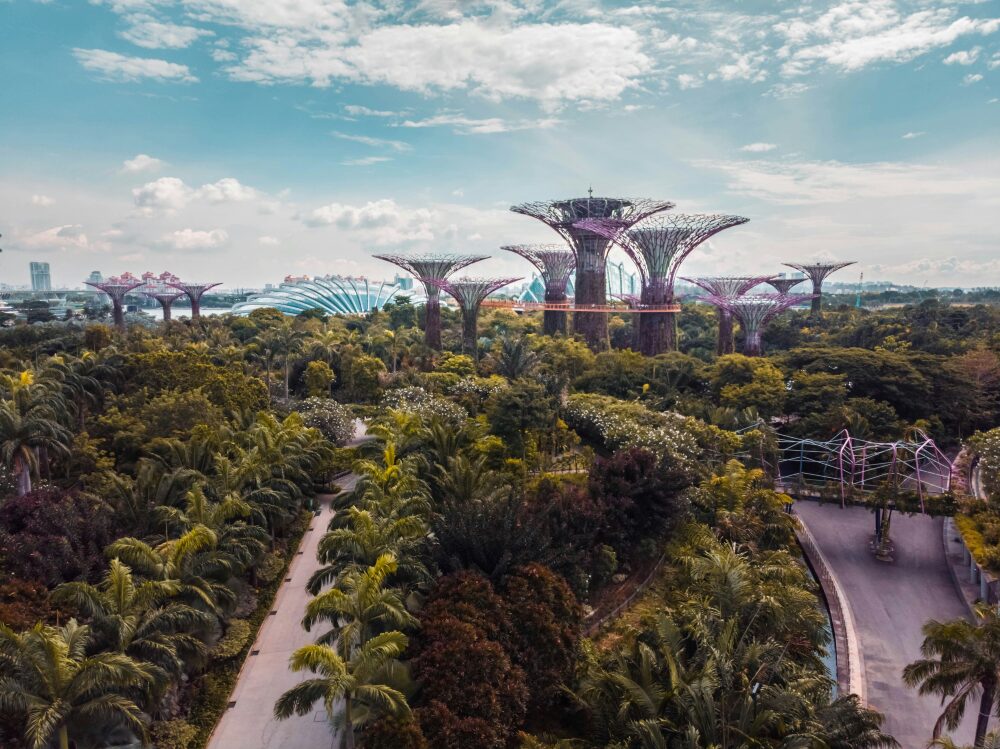As 2025 begins, readers look ahead to their reading goals and trends that unfold with the new year. New subgenres continue to proliferate and capture a growing audience, with readers increasingly drawn to narratives that offer hope and comfort. Climate fiction (cli-fi) has grown and expanded to include its own distinct subgenres as environmental concerns remain at the forefront of public consciousness. Among these, solarpunk is poised for significant growth in the coming year.
While cyberpunk, steampunk, and even biopunk are familiar fixtures in science fiction, solarpunk is a more recent phenomenon—first coined in a 2015 Tumblr post (though works in this style date back to at least 1974). Solarpunk can be thought of as the antithesis of cyberpunk. Where cyberpunk portrays dystopian, environmentally devastated worlds controlled by corporations, solarpunk offers a future where humanity and nature thrive together. In these narratives, advanced technology doesn’t come at the expense of sustainability; instead, they sustain each other. The 2015 Tumblr post describes it as, “Less corporate capitalism, and more small businesses,” “Education in tech and food growing,” “Stained glass window solar panels,” and “No-cars-allowed walkways lined with independent shops.” Eco-conscious design, community-centered living, and technological advancement all define solarpunk’s position in speculative fiction.
Solarpunk’s predecessors are often traced back to Ursula K. Le Guin’s The Dispossessed (1974), which portrays an anarchist society on the moon Anarres embracing sustainability and communal living over capitalism, and Ernest Callenbach’s Ecotopia (1975), in which the Pacific Northwest has split from the US to form an environmentally conscious society. Early solarpunk also extends to films like Nausicaӓ of the Valley of the Wind (1984), in which post-apocalyptic humanity comes to live in harmony with the Toxic Jungle that surrounds its settlements. While Nausicaӓ remains the strongest example of solarpunk in Studio Ghibli’s catalog, many of the studio’s films contain elements of its core ideals, resonating with fans of the genre. Another example came in 1990, which saw the release of Pacific Edge by Kim Stanley Robinson, in which the inhabitants of Orange County in 2065 have succeeded in forming a utopian society that practices ecological sustainability. Kim Stanley Robinson went on to contribute numerous titles to the solarpunk canon, including Blue Mars (1996), New York 2140 (2017), and The Ministry for the Future (2020).
Solarpunk sits at the nexus of several current reading trends. As readers increasingly gravitate toward niche subgenres and climate concerns remain pressing, solarpunk is well positioned to capture a growing readership of the cli-fi audience. The genre’s hopeful outlook also aligns with the surge in lower-stakes and heartfelt “cozy fantasy” like Legends and Lattes by Travis Baldree, The House in the Cerulean Sea by T. J. Klune, and The Very Secret Society of Irregular Witches by Sangu Mandanna. Often recommended in the same breath as these, despite being sci-fi, is the Monk and Robot series (2021, 2022) by Becky Chambers. These books, in fact, are quintessential examples of solarpunk.
The solarpunk genre will likely see more contributions and growing interest this year, offering readers a counternarrative to dystopian works. It’s a realm of fiction highly worth exploring. Rather than reflecting our fears of environmental collapse and corporate rule, solarpunk offers a future worth pursuing, where humanity and nature thrive together.
Written by Eden Herzog.

